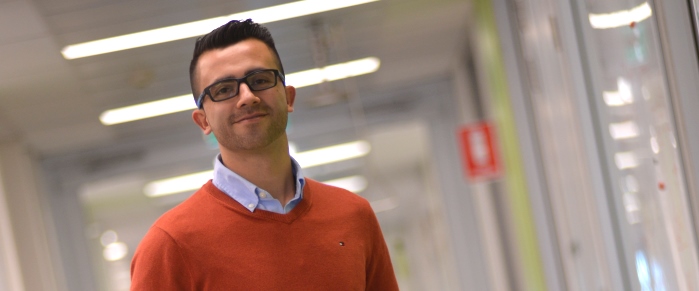News
3D printing bone tissue
Jun 28 2022
Project: Developing suitable 2D and 3D in vitro models to study the effect of electrical stimulation in neuromuscular junction formation.

Where are you going?
I have recently submitted my PhD thesis and I’m looking forward to graduating.
In the meantime, I was offered a Postdoctoral position at a great institution, Karolinska Institutet, with a worldwide reputation in Stockholm, Sweden. I’ll be working with a younger researcher, very enthusiastic and full of good ideas, his name is Pekka Katajisto.
In the long-term, I would like to start my own business.
Why did you choose the ACES cab to get you there?
I chose ACES for its incredible facilities—it has some of the best in the world—and also the international reputation of the staff.
What is your research about?
There are many clinical (in vivo) and laboratory experiments (in vitro) studies that have shown that electrical stimulation has positive benefits in many areas such as wound-healing, pain relief and muscle restoration, just to mention some.
My research aimed to develop a two dimensional (2D) in vitro model to help us understand the impact of electrical stimulation, and specifically how this stimulation affects neuromuscular junctions (NMJ), as they are a key element for human functionality.
Additionally, it has been shown that 3D in vitro models hold significant advantages over their 2D counterparts as these models reflect a closer biological representation of the in vivo tissue environment. I was working on developing three dimensional (3D) in vitro models that would allow us to replicate tissue in a more accurate fashion.
What is the outcome of your research?
I had two main outcomes:
Why is this important?
Electrical stimulation (ES) is a very important therapy, as it has been used in clinical applications. My research opens the opportunity to expand its application as well as to used alternative electrode materials such as conductive polymers, which offers a new set of opportunities to combine ES with control bioactivity.
The 3D tissue-like models offer the opportunity to provide a more accurate representation of in vivo environments with applications ranging from cell behaviour studies, understanding diseases to drug testing and perhaps could offer the opportunity reduce the use of animal testing.
What’s playing on the radio right now?
As a Hispanic, I love salsa and merengue music. It makes me happy!













